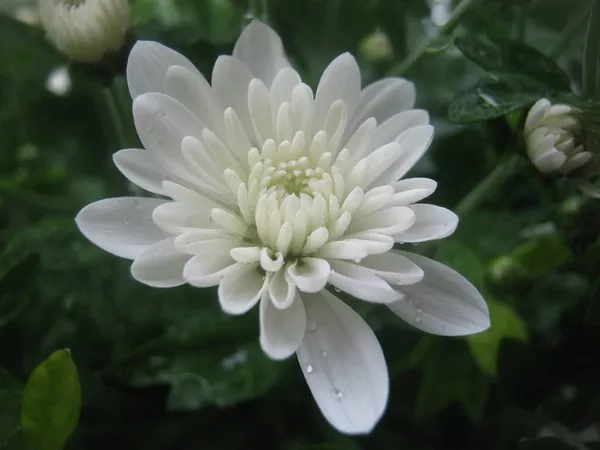Narcissus, a genus of perennial flowering plants, is renowned for its striking beauty and captivating allure. Native to Europe and North Africa, these blooms have captured the hearts of many with their unique characteristics and rich symbolism. In this comprehensive guide, we delve into the world of the Narcissus flower, its distinctive appearance, cultivation, symbolism, and cultural significance.
Unveiling the Beauty: What Does a Narcissus Flower Look Like?
The Narcissus flower, often referred to as a daffodil, boasts a distinct and mesmerizing appearance. The flower typically features a central trumpet-shaped corona surrounded by six petal-like tepals. These tepals are characterized by their vibrant colors, ranging from bright yellow and white to a combination of the two. The corona, which emerges from the center of the flower, can take on various shapes, such as flared, frilled, or even doubled, adding to the flower’s diversity.
The unique structure of the Narcissus flower captures the essence of elegance and sophistication. Its contrasting colors and layers create a visual masterpiece that has inspired artists, poets, and garden enthusiasts for centuries. The juxtaposition of the trumpet-like corona against the surrounding tepals forms a harmonious blend of form and color, making the Narcissus flower a true marvel of nature.
Cultivation and Care: Nurturing Narcissus
Cultivating Narcissus flowers can be a rewarding endeavor, adding a touch of charm to gardens, landscapes, and indoor spaces. These flowers are known for their easy cultivation and ability to thrive in various environments. Here are some essential tips for nurturing Narcissus plants:
1. Choosing the Right Location: Narcissus flowers prefer well-drained soil and plenty of sunlight. Select a location that receives at least six hours of direct sunlight daily.
2. Planting Depth: When planting Narcissus bulbs, ensure they are buried at a depth roughly three times the bulb’s height. This helps protect them from extreme temperatures and provides stability as they grow.
3. Watering: While Narcissus flowers require regular watering, it’s essential to avoid overwatering, as this can lead to bulb rot. Allow the soil to dry out slightly between watering sessions.
4. Fertilization: Apply a balanced fertilizer when the shoots begin to emerge in the spring. This will support healthy growth and vibrant blooms.
5. After Blooming Care: Once the flowers have bloomed and faded, it’s important to let the foliage die back naturally. This process allows the bulb to store energy for the next blooming season.
Symbolism and Significance: More Than Meets the Eye
Beyond its aesthetic appeal, the Narcissus flower carries a wealth of symbolism and significance in various cultures and contexts. One of the most common interpretations is that of rebirth and renewal. The flower’s emergence from the ground each spring after lying dormant during the winter is seen as a representation of new beginnings and the cycle of life.
In Greek mythology, the Narcissus flower is associated with the tale of Narcissus, a youth who fell in love with his own reflection and transformed into the flower that bears his name. This myth has led to associations with vanity and self-admiration, adding a layer of complexity to the flower’s symbolism.
In the realm of flowers, Narcissus is often regarded as a symbol of good fortune and prosperity. In some cultures, gifting these blooms is thought to bring luck and success to the recipient. Additionally, the Narcissus flower is linked to the celebration of the Chinese New Year, where it represents longevity and the fulfillment of one’s dreams.
Cultural Significance: Narcissus Across the Globe
The allure of the Narcissus flower extends beyond its physical beauty and symbolism—it holds cultural significance in various parts of the world. Here are a few examples:
1. Chinese Culture: The Narcissus flower, known as the “Lucky New Year Flower” in Chinese culture, is a popular choice for celebrating the Lunar New Year. Its white petals and golden center are associated with purity, good luck, and prosperity.
2. Persian Traditions: In Iran, Narcissus flowers are a cherished part of the Nowruz (Persian New Year) celebrations. They symbolize the arrival of spring and the renewal of life.
3. Western Gardens: Narcissus flowers have been cultivated for centuries in European gardens. They have become a staple of springtime displays, showcasing their dazzling colors and fragrances.
4. Literary References: The Narcissus flower has inspired poets and writers throughout history. It has been featured in numerous works of literature, often serving as a metaphor for beauty, self-discovery, and fleeting moments.
Conclusion
In the world of flora, few flowers possess the captivating charm and symbolism of the Narcissus. Its unique structure, vibrant colors, and rich cultural history make it a timeless favorite among garden enthusiasts, artists, and storytellers. Whether adorning gardens, brightening indoor spaces, or carrying cultural significance, the Narcissus flower continues to enchant and inspire, reminding us of the profound connections between nature, beauty, and human expression. As we appreciate its elegance, we also reflect on the deeper meanings it embodies, embracing the cycles of life, renewal, and the inherent allure of the natural world.


